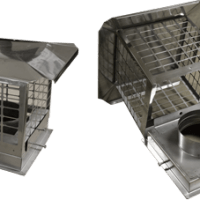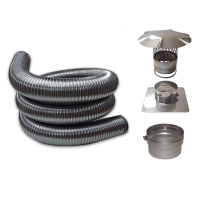Unlike the winter months, summer allows for you to focus on specific chores, chores that cold weather prevents you from doing. While winter is a time to focus on the inside of your house, summer directs your attention to the outside. To every season, turn turn. There is a time for war, a time for peace, and a time to clean your window wells. The following is a list of the chores to turn your attention to during the turn of the season:
Sweep your Chimney: An unswept chimney is a chimney that is begging for trouble, trouble that can cause fire and carbon monoxide poisoning. Because of these potential dangers, keeping your chimney clean is an essential part of home safety and summer is the best time to do it: summer is a season when most people don’t give their fireplace a second thought, which makes it the ideal time to call a chimney sweep. Chimney sweeps aren’t nearly as busy in the summer months: have a sweeper sweep your chimney now so that you’ll be all set when winter approaches.
Paint Your House: Paint isn’t forever. It fades, it chips, it gets discolored from various elements of weather and, on occasion, it gets covered up with bird poop. For all of these reasons, your house requires repainting every few years and summer is the best time to do this. During warms months, you can paint in peace, without having to worry about slipping on ice or a spring rain storm moving in and erasing your handiwork. Perhaps you want to paint your house the same color it has been, and just need to do some touch up work. Perhaps you want to paint your house an outrageous color, if for no other reason than to get back at your neighbor who insists on that ridiculous Christmas light display every year. Whatever your painting reasons, painting during summer can save you a lot of frustration other seasons may bring.
Build a Deck: Few things are more relaxing than sitting on a deck during a summer night, a full glass of lemonade in hand. Every year you may find yourself longing for this experience, longing for a deck to call your own. Yet, you might put off building one during summertime, thinking that by the time it’s built autumn will be moving in. Still, your deck isn’t going to build itself and, as they say, there is no time like the present: if you begin as soon as summer starts, your deck just might be ready to use come mid or late summer. If not, there’s always next year to christen it.
Repave Your Driveway: Repaving your driveway is awfully hard to do during the winter months, what with two feet of snow literally getting in your way. Instead of fighting ice, snow, and other various weather elements, repave your driveway during summertime. A repaved driveway not only looks more appealing, but it also keeps cracks from spreading, causing earth and foundations to come up and your mother-in-law to trip. Even if your driveway doesn’t need complete repaving, take a few days during summer to fill in the sections that could use some work.
Clean out Your Window Wells: Cleaning a window well is like going on a treasure hunt, discovering things you haven’t seen in years. You might find your child’s old Frisbee, your dog’s old tennis ball, or the source of that foul dead mouse odor. Whether or not you are looking for anything specific, cleaning window wells is an essential summer chore. Not only does a clean window well allow you to actually see out of your basement windows, but it keeps trash from accumulating, trash that can invite unwanted wildlife to invade. Before beginning your window well cleaning, be sure to put on gloves, pants, and a long sleeve shirt: window wells can contain their fair share of biting insects.
No one really enjoys summertime chores: you may want to use the season to relax instead of work. But, working hard in the beginning of summer to complete all your tasks can give you the rest of the summer to enjoy your much deserved fun in the sun.
Jennifer Jordan is the senior editor for http://www.etodoors.com. Someone who changes her mind every five minutes, her house is in a perpetual state of home improvement.





